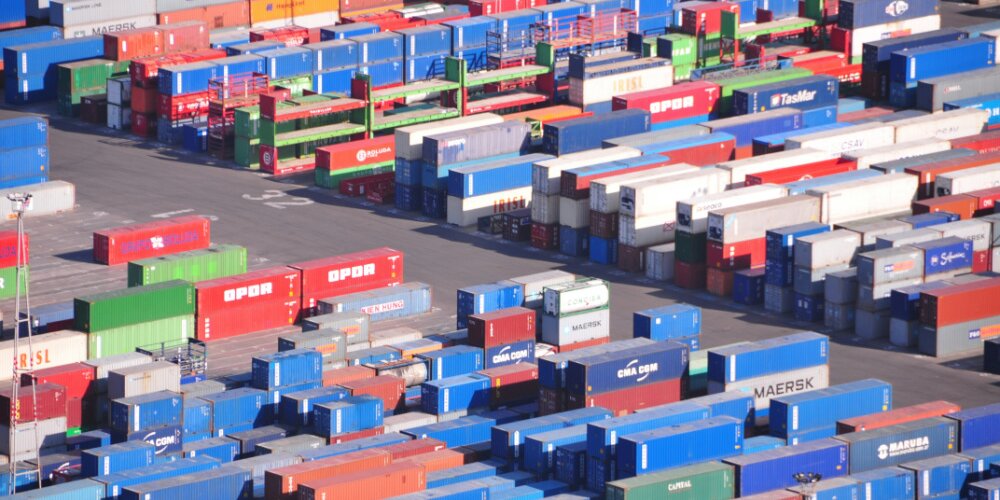Browse our services
Explore how Brookes Bell can help you
Find an expert
Meet our team, find and expert and connect
Contact us
Get in touch, we're here to help

In a development that could potentially radically improve port efficiency, US-based BidBird has developed two ‘multiple container handling systems’, which will allow for the movement of two or four full-loaded containers simultaneously.
The two systems are called Monarch and Dragonfly, with Monarch being able to lift two containers at a time, and Dragonfly able to lift four at a time.
According to BidBird, the new Monarch and Dragonfly ‘clips’ will be able to reduce box handling times at ports by 50% and 75% respectively.
However, aside from the improvement in handling times, BidBird has touted another potential benefit of their system.
As the system uses lashing bars to bundle the container together (in anticipation of lifting), the bundled containers will potentially be much more stable and resistant to collapse in the event of heavy and adverse weather conditions. BidBird anticipates that such stability may also result in potential reductions in insurance premiums for shipping companies.
BidBird has also suggested that the systems’ lashing rods will reduce the number of loose rods on a lashing bridge. This could have the concomitant impact of reducing lashing-related injuries amongst stevedores - reducing worker compensation claims.
Commenting on the new handling system, BidBird’s President, Trevor Pan, said:
“Monarch is set to revolutionise maritime logistics by delivering unprecedented efficiency, safety, and economic advantages. With patents pending, this innovative product is destined to become a cornerstone of modern shipping practices”.
It is expected that should port operators wish to adopt the Monarch and Dragonfly clips into their operations, they will need to modify gantry cranes to handle the increased weight they’ll be handling. Additionally, it is likely that ship cell guides will need to be lightly modified in order to accommodate the new system seamlessly.
Regardless of what measures are put in place, sometimes crane incidents occur - whether it’s structural failures, winch failures, wire rope failures or other forms of failure.
Should your port be dealing with a crane incident, then it’s vital that you are able to establish exactly what happened, as well as causality and liability. Brookes Bell can help you do exactly that.
For more maritime industry insights, news and information, read the Brookes Bell News and Knowledge Hub…
ONE Trials Dual-Temperature, Controlled-Atmosphere Containers | WSC Seeks to Prevent Container Fires With Cargo Screening Programme | Hapag-Lloyd to Fit Container Fleet With Real-Time Tracking Devices